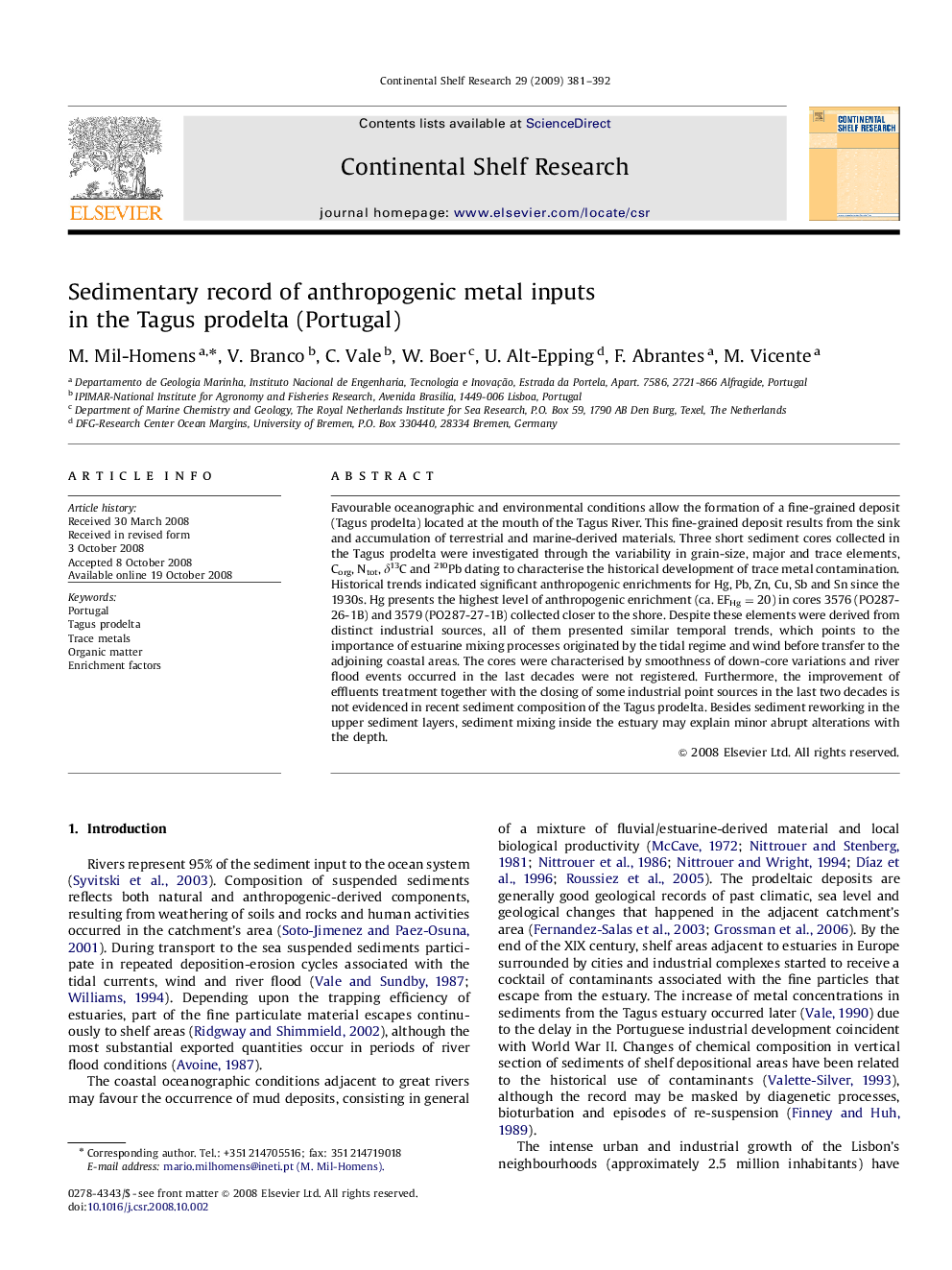| Article ID | Journal | Published Year | Pages | File Type |
|---|---|---|---|---|
| 4533200 | Continental Shelf Research | 2009 | 12 Pages |
Favourable oceanographic and environmental conditions allow the formation of a fine-grained deposit (Tagus prodelta) located at the mouth of the Tagus River. This fine-grained deposit results from the sink and accumulation of terrestrial and marine-derived materials. Three short sediment cores collected in the Tagus prodelta were investigated through the variability in grain-size, major and trace elements, Corg, Ntot, δ13C and 210Pb dating to characterise the historical development of trace metal contamination. Historical trends indicated significant anthropogenic enrichments for Hg, Pb, Zn, Cu, Sb and Sn since the 1930s. Hg presents the highest level of anthropogenic enrichment (ca. EFHg=20) in cores 3576 (PO287-26-1B) and 3579 (PO287-27-1B) collected closer to the shore. Despite these elements were derived from distinct industrial sources, all of them presented similar temporal trends, which points to the importance of estuarine mixing processes originated by the tidal regime and wind before transfer to the adjoining coastal areas. The cores were characterised by smoothness of down-core variations and river flood events occurred in the last decades were not registered. Furthermore, the improvement of effluents treatment together with the closing of some industrial point sources in the last two decades is not evidenced in recent sediment composition of the Tagus prodelta. Besides sediment reworking in the upper sediment layers, sediment mixing inside the estuary may explain minor abrupt alterations with the depth.
